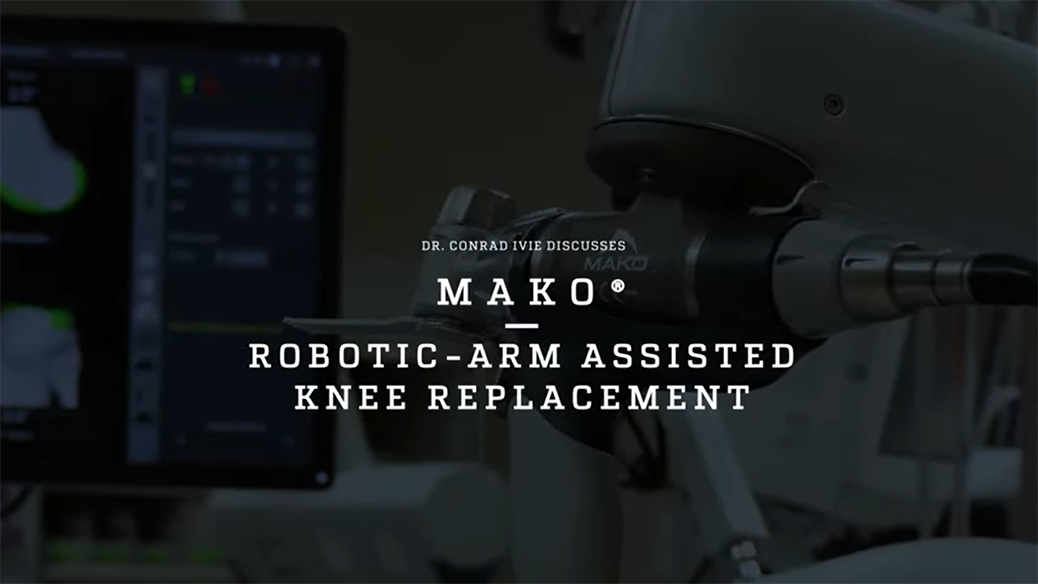We get a lot of questions about what is a robot? What does it do? How does it make you more accurate and more precise in surgery? So, what we wanted to do is go through all this and walk you through here. This is a Sawbones model or practice or demo model where we’re going to be able to show you some of the things that the robot can do.
This is our robot. This is called the Mako robot with Stryker Orthopedics, and this is the one that we’ve been using here for well over three years now. And we’ve done well over a thousand cases with this now, and it’s worked exceptionally for us.
Parts that make up the Mako® Robot
In our model and everything we’re working with, we have different parts. We have the arrays. Those are the things that allow the computer to know where the bone and the legs are in space. It also has an array that lets us know where the robot is in space, and then we work off our computer system here to make all of our adjustments during surgery.
Real-Time Data
So, what we’re able to do with patients after we’ve gotten in the OR, we’ve already done our CT scan, and we get to the point of making the decision of where we place the parts, we take real-time data with the patient’s ligament balance and the position of their knee. And we’re able to adjust these parts so that each patient’s knee has the most optimal balance for that patient.
Robotic Precision Cuts
So, at this point, we’ve mapped out our knee, we’ve made the decision on where all of our implants are going to go, and really the case is pretty much over. Now we just have to execute that plan with the robot. What this allows us to do, because of the haptics in the arm of the robot, which allows it to know where it is in space and stop us if we are more than half of a millimeter off from where we planned, it allows us to execute that plan with the most precision we’ve ever been able to do.
So, we bring the robot in and as I position it here, I’m looking at my screen, working with it, and I just have to squeeze this trigger and it aligns to the perfect alignment of where we’ve planned our cut. It won’t do anything if I’m not squeezing the trigger. So, the surgeon’s in control of that, but it won’t start until I grab or squeeze it, but it’ll also hold it in that plane. So, if I try to move out of that plane, it shuts off and won’t work. So then we can bring it back in and you can look at our boundaries there and we’ve set boundaries all around the bone to protect the ligaments and the soft tissues of the knee.
So we would then repeat this process through the additional cuts. There are another five different cuts that we would have to make on the femur to complete the knee replacement cuts. And then we really put in trial parts, check everything one more time, and then we put in our final parts, and the surgery is complete.




